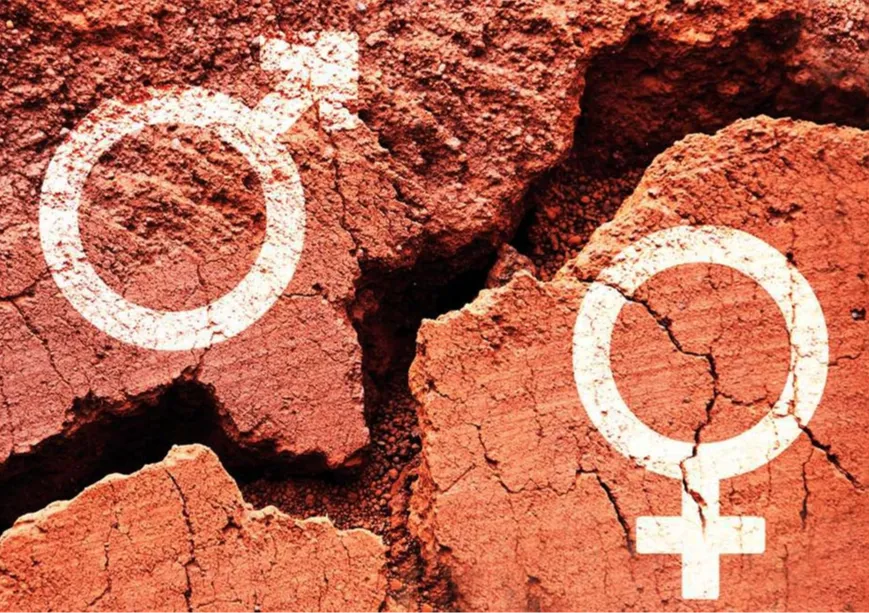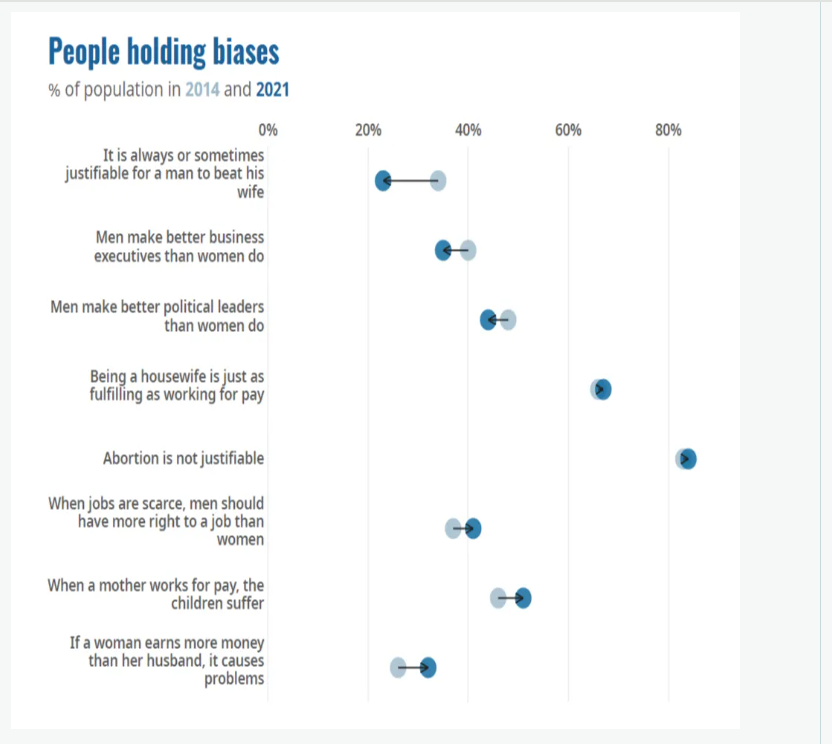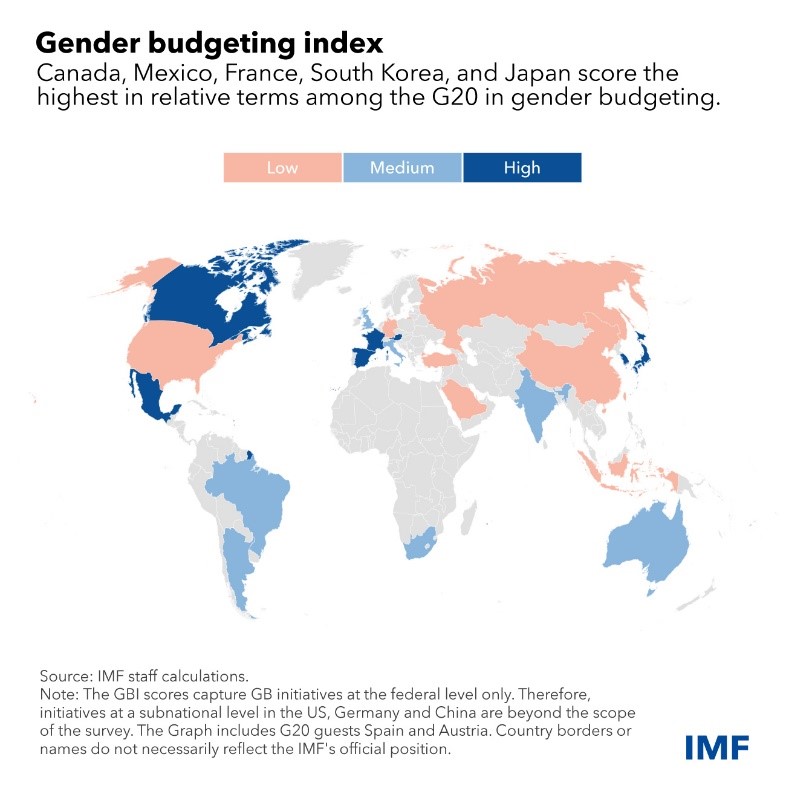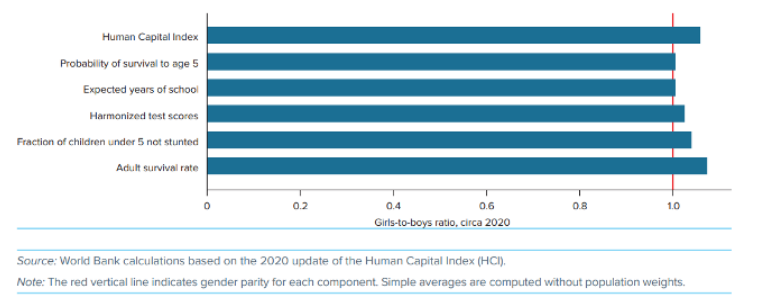-
CENTRES
Progammes & Centres
Location
Due to unprecedented global crises, progress in bridging the gender divide has stagnated

A sluggish global economy and growing geopolitical tensions compounded by a looming climate crisis have erected multiple roadblocks that have thwarted concerted efforts to bridge the global gender chasm. More than often the drivers of gender inequality fuel gender gaps collectively, across development areas. As nations choke under stringent fiscal and debt limitations, women remain steeped in poverty, are the world’s most illiterate and are severely impacted by the great digital divide. Globally, nearly 90 percent of women and girls are involved in preparing food for their families yet remain the most vulnerable to hunger and malnutrition and water scarcity.
Pervasive gaps exist in higher education such as the STEM fields, employment, and health outcomes including leadership and decision-making roles.
The cycle of violence against women also continues to be endemic across cultures, gravely exacerbated by the onslaught of the COVID-19 crisis. Pervasive gaps exist in higher education such as the STEM fields, employment, and health outcomes including leadership and decision-making roles. Despite these fault lines, progress for gender equality as a development agenda continues to be constantly challenged by structural power dynamics. These setbacks culminate in a clear pushback for human development as well as for women’s empowerment as enshrined in the 2030 Agenda for Sustainable Development. Although not completely exhaustive, this piece takes stock of the status of accelerating outcomes in key verticals such as economic participation, women’s leadership and political participation, ending violence against women, changing mindsets about persisting gender stereotypes and low gender responsiveness of budget systems that impede progress towards gender equality.
The slow pace of legal reforms that could have supported women’s lop-sided economic rights fell to a record low in 2022. This has unfortunately spurred intersectional gender gaps across sectors and often has succeeded in reversing progress towards equality. Unemployment remains higher among young women than men, women in the labour force are also half as likely as men to occupy full-time jobs and are often vulnerable to workplace discrimination. Although women account for nearly half of the agricultural labour force in developing nations, the lack of land ownership deters them from utilising information, credit, and membership in farmers' associations. Women tend to populate the informal economy in Sub-Saharan Africa, Latin America, Southern Asia, and more generally in low- and lower-middle-income countries without adequate rights. Gender disparity is rife in the insformal sector for women who make up nearly 80 percent of global domestic workers. They suffered major job losses as a result of the pandemic. As informal employment is often associated with high poverty rates and low social mobility, women are the most likely victims.
Women across the world toil for hours in unpaid care work (UCW), pre-pandemic, women in India reportedly spent eight times more hours dedicated to UWC than men, surpassing much beyond the global average of three hours.
Women have also suffered higher unemployment losses than men in all regions in the aftermath of the COVID-19 pandemic partly owing to their disproportionate care responsibilities. Women across the world toil for hours in unpaid care work (UCW), pre-pandemic, women in India reportedly spent eight times more hours dedicated to UWC than men, surpassing much beyond the global average of three hours. Understanding gender inequality in unpaid care work is critical as it is the missing link in analysing gender gaps in labour outcomes, such as labour force participation, income, and quality job standards.
Hindered by the gender gap in skill acquisition, access to finance, technology, and limited information on market volatility, women are underrepresented in enterprise and business. Even C-suite roles remain dominated by men, with women in India holding up to 15 percent of top positions, far lower than G20 members such as the United States (US), France, Germany, United Kingdom (UK) and South Africa.
Structural gender biases and norms continue to retard progress in women’s political representation around much of the globe. According to a report by the Inter-Parliamentary worldwide women made up for only 26.5 percent of parliamentarians on 1 January 2023 in single or lower houses clocking a year-on-year increase of only 0.4 percentage points, the slowest growth in six years. India as the world’s largest democracy too has seen a low rise of women’s representation from 5 percent to around 15 percent from the first and current Lok Sabha.
Hindered by the gender gap in skill acquisition, access to finance, technology, and limited information on market volatility, women are underrepresented in enterprise and business.
According to the World Health Organisation (WHO), globally, one in every three women and girls has experienced some form of physical or sexual violence by an intimate partner or a non-partner at least once in their lifetimes.
The malice of violence against women and girls grows unabated with the shadow pandemic driving gender–based violence (GBV ) to alarming levels. Around 54 percent of women reported a perceived spike in their communities with the highest perceived incidences in Latin American Countries and Sub-Saharan Africa. Tech-facilitated gender abuse against women is also surging affecting 16-58 percent of women globally according to the Institute of Development Studies. Human trafficking, child marriages, sexual harassment and female genital mutilation remain rampant around the world. Women are vulnerable to sexual harassment at the workplace, while commuting on public transport and in public spaces which can long-term impact their productive economic participation. And again, two unrelenting wars of our times have demonstrated that women are acutely susceptible to severe forms of violence in situations of conflict.
Around 54 percent of women reported a perceived spike in their communities with the highest perceived incidences in Latin American Countries and Sub-Saharan Africa.
Normative attitudes around domestic gender roles, power and dominance remain ingrained in our societies as revealed in recent research which shows that younger men hold more conservative and restrictive views than men in their early 30’s. These archaic ideas can result in staggering socio-economic ripple effects costing nations trillions of dollars in lost GDP. Change against these discriminatory mindsets however remains regrettably slow. A global survey reports that gendered social and behavioural attitudes have barely shifted between 2014-2022. Disturbingly biases related to women’s economic opportunities seem to be intensifying with increasing beliefs that men should have a clear advantage over women when jobs become scarce as shown in Figure 1.
Figure 1 Percentage of People holding biases in 2014-2021

Source: Inglehart et al. (2022), World Values Survey: All Rounds.
Gender budgeting strategies although widespread have had varied regional impacts, as a study notes that despite incorporating such efforts in their fiscal policies, the G20 countries are still falling behind in effectively operationalising, evaluating and monitoring these tools. Using a gender budgeting index from data collected from G20 countries, the figure below demonstrates that Canada, Mexico, France, South Korea, and Japan perform better than other members.
Figure 2: Gender Budgeting Index in G20 countries

Source: IMF, Gender Budgeting in G2o Countries
Although the last decade managed to garner some hard-earned wins such as girls’ human capital is now at par or even higher than boys’ in 90 percent of countries with available gender-disaggregated data as shown in Figure 3. But these gains have been uneven with varied regional disparities, especially in terms of maternal deaths and secondary education and in many nations, human social capital gains have been reversed by the after-effects of the global pandemic.
Figure 3 Girls-to-boys ratio for Human Capital Index and its components, 2020

Source: World Bank Calculations based on the 2020 update of the Human Capital Index (HCI)
Gender equality is often socially charged and in some cases politically contentious but remains a fundamental human right, critical for creating inclusive and sustainable societies. One noticeable effort was India’s nudge for women’s leadership across the development landscape. Nestled in the heart of India’s G20 Presidency, a novel lexicon of a ‘Women-led Development Agenda’ heralded a paradigm shift in gender-responsive policy-making. It crafted a blueprint for prioritising women’s agency in mitigating and adapting to climate change, closing the gender digital divide, investing in education, entrepreneurship and upskilling measures, promoting rural leadership and escalating their gainful participation in the economy. With that in place, now is the time to put in place an operational plan by catalysing key drivers of change, such as: i)Ensuring women as equal participants in the future of work, in terms of opportunities, access to finance, skills, innovation, representation and leadership; ii) Building on best practices and institutional innovations through international development partnerships, especially in reducing women’s time poverty and drudgery; iii) Generating gender-disaggregated data on a global scale, accessible to policymakers and academics alike to develop and assess evidence based analyses as well as to track and monitor progress; iv) Easing fiscal policies, budget management and procurement systems to be steered to enhance allocation of adequate funds to counter barriers in advancing pathways to gender equity; v) Engaging key actors to challenge harmful practices such as curtailing child marriages and eliminating GBV which can have lasting impact on changing restrictive mind-sets and result in balanced gender outcomes. Closing some of these gendered chasms will be pivotal for growth or else gender equality will remain 300 lightning years away.
Arundhatie Biswas Kundal is a Senior Fellow at the Observer Research Foundation
The views expressed above belong to the author(s). ORF research and analyses now available on Telegram! Click here to access our curated content — blogs, longforms and interviews.

Arundhatie Biswas Kundal was a Senior Fellow Observer Research Foundation India ...
Read More +